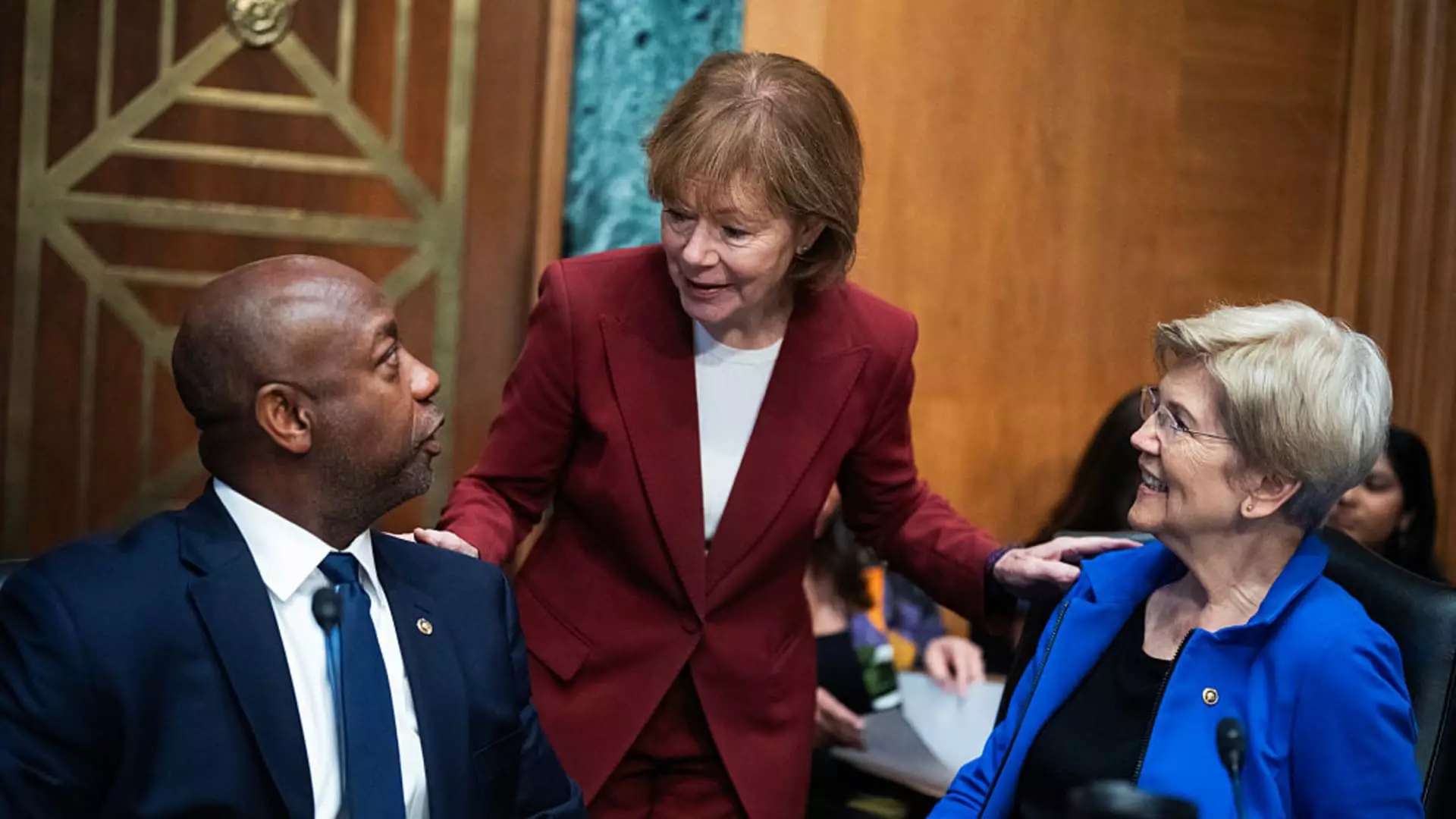The recent approval of the Housing Bill by the Senate Banking, Housing, and Urban Affairs Committee offers a glimmer of hope for those trapped in the relentless grind of housing insecurity. Yet, beneath the surface of bipartisan collaboration lies a troubling reality: much of the legislation is designed to mask the systemic failures of our housing policies rather than confront them head-on. While proponents hail it as a landmark step toward increasing affordable housing, the truth is that this bill risks being another stopgap, an incremental patch rather than a comprehensive solution to America’s escalating housing crisis.
At face value, the bill’s focus on easing local permitting processes, expanding manufactured housing, and offering relief to some homeowners appears promising. But such measures, though beneficial in specific contexts, do little to challenge the core issues—massive income inequality, unaffordable property markets, and inadequate federal investment—that perpetuate housing instability for millions. The bill’s superficial adjustments may make headlines, but they fall far short of addressing the structural barriers that prevent low- and middle-income Americans from accessing safe, affordable homes.
Market Failures and the Illusion of Supply-Driven Solutions
The underlying premise of this legislation—boosting housing supply—sounds compelling, especially in a market where record-high prices have priced many out of homeownership. However, increasing supply alone will not suffice if demand remains unchecked or if supply is only added in luxury developments designed for wealthier buyers. The emphasis on easing regulations to facilitate construction risks simply encouraging more market-driven, exclusionary projects that fail to prioritize affordability for the majority of Americans.
The bill’s approach to manufactured housing, by removing restrictions on chassis requirements, may enhance affordability and availability in the short term. Yet, this measure overlooks the persistent stigma and racialized policies that historically relegated manufactured homes to marginalized communities. Removing procedural barriers is only part of the solution; addressing the societal biases and land-use restrictions that perpetuate segregation remains a deeper challenge. Moreover, expanding such housing options without adequate protections could lead to the proliferation of poorly maintained communities, further devaluing residents’ quality of life.
Another superficial fix is the continuous reliance on emergency relief programs like the Community Development Block Grant Disaster Recovery fund. While important for disaster recovery, these measures are reactive rather than proactive. They patch the damage after crises occur but do little to prevent the frequent playbook of destruction that exacerbates housing insecurity—climate change, economic downturns, and urban decline remain unaddressed in comprehensive policy frameworks.
The Myth of ‘Helping the Most Needs’
Despite claims of supporting underserved and marginalized communities, the bill’s provisions are woefully insufficient to genuinely uplift these populations. Changes such as extending mortgage terms for USDA direct loan borrowers, while helpful for some homeowners, overlook the broader systemic inequalities faced by communities of color and rural populations. These groups are often hit hardest by housing unaffordability, yet tax relief to individual homeowners does little to alter the structural disparities rooted in historical discrimination, zoning laws, and economic marginalization.
Furthermore, the emphasis on easing building regulations for local governments risks encouraging gentrification and displacement. When permitting processes are simplified, it often results in urban renewal projects that benefit wealthier newcomers at the expense of longstanding, low-income residents. Without explicit safeguards, such reforms could exacerbate segregation, tearing apart communities that have historically been boxed out of the opportunity to stay in their neighborhoods.
It is also telling that the bill, despite its grandiose language, makes only modest strides in actual affordability. The focus on streamlining construction and expanding certain types of housing does little to confront persistent issues like soaring land prices, stagnant wages, and financial exclusion. True reform demands a more radical restructuring of our housing economy—something this legislation merely hints at but does not deliver.
Unmasking the Rhetoric: What Remains Unsaid
The bipartisan nature of this bill might seem encouraging on the surface, yet it reveals political expediency more than genuine commitment. Both parties appear eager to showcase “action” without risking bold reforms that could alienate powerful interests—real estate developers, financial institutions, and local governments embedded with zoning restrictions. The bill’s emphasis on easing building regulations and leveraging federal funds for disaster recovery sidesteps the contentious but necessary debates about wealth redistribution, zoning reform, and tenant protections.
Moreover, the legislative effort appears more about managing public perception than implementing true transformative change. By focusing on incremental changes—such as allowing more manufactured housing or extending loan relief—the legislation mollifies populist calls for change while preserving the status quo supporting entrenched economic inequalities. It’s a strategic dance that offers just enough to satisfy both progressives and conservatives, ensuring the bill’s political viability but at the cost of actual, meaningful impact.
In essence, this bill exemplifies a common pattern in contemporary housing policy: addressing symptoms rather than causes. It promises increased opportunity but leaves untouched the fundamental structural issues that have rendered housing a commodity rather than a right. For millions of vulnerable Americans, what’s missing is a comprehensive, justice-oriented approach—one that prioritizes community-led development, equitable land use, and a voice for those most affected by housing policies. Instead, what we get is a patchwork of half-measures cloaked in bipartisan rhetoric, masking the uncomfortable truth: true reform remains elusive in a system that benefits the few at the expense of the many.

